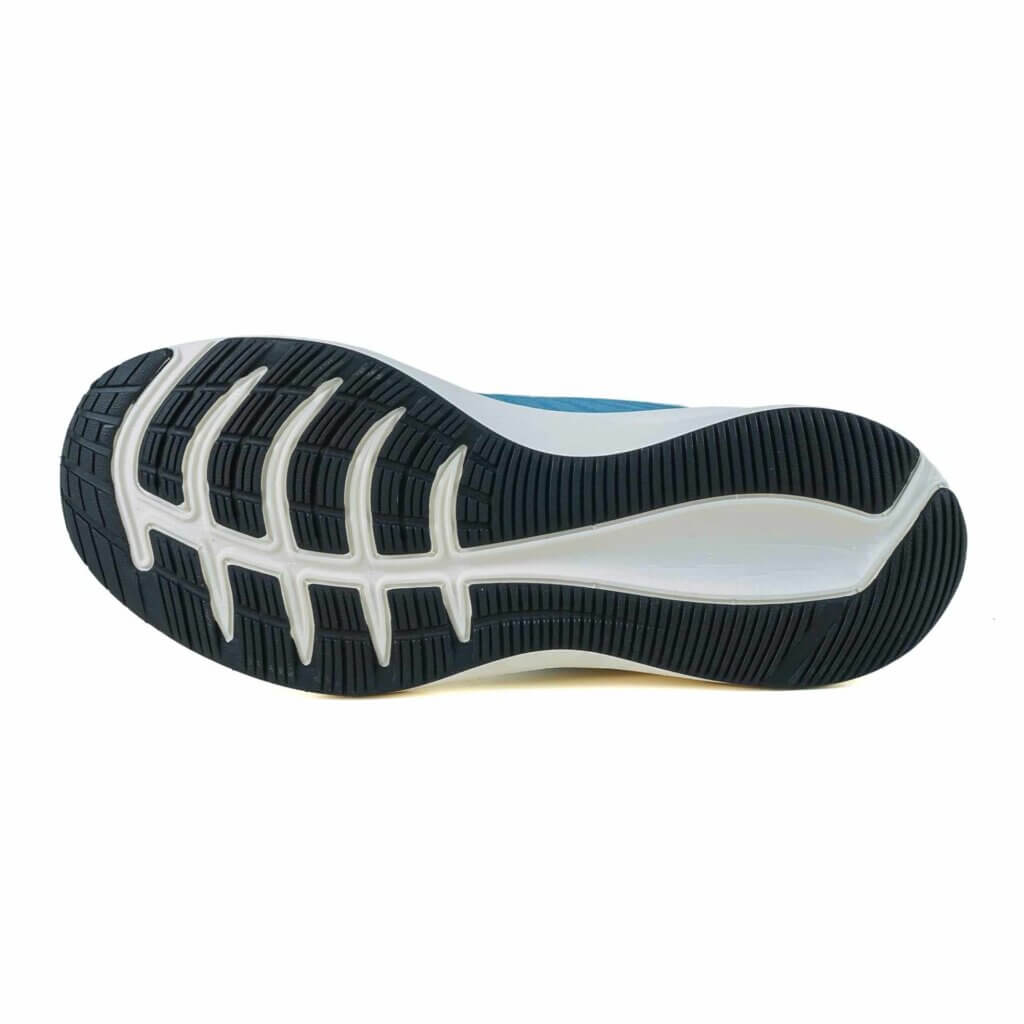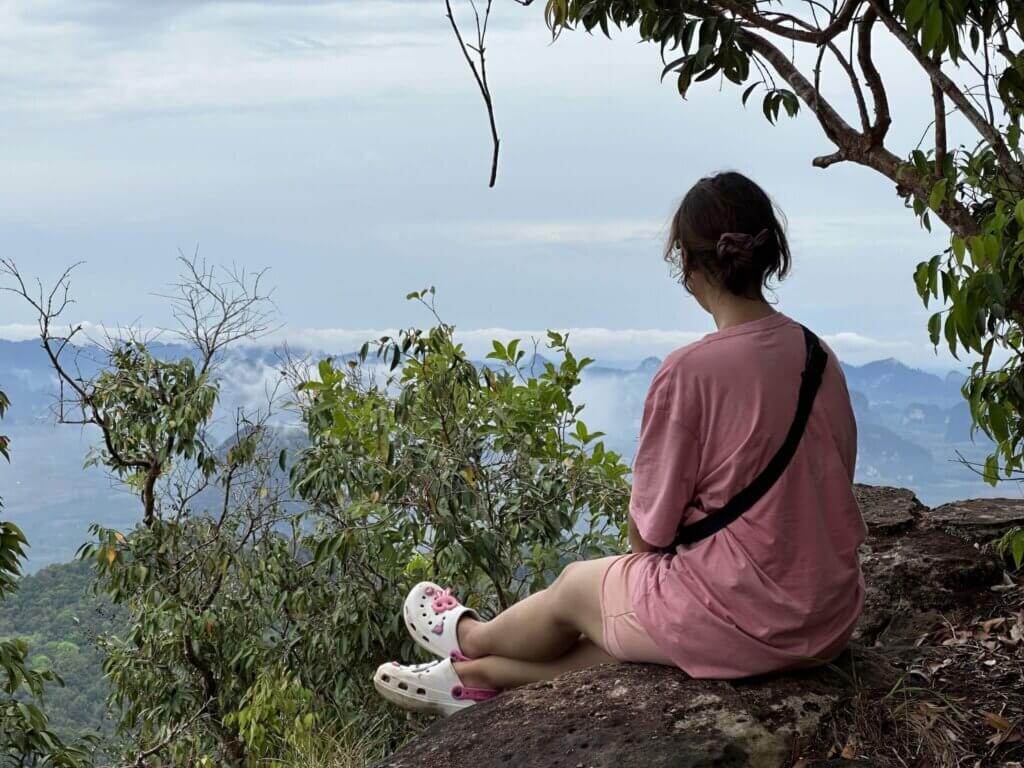Running shoes are not suitable for trekking. However, hiking shoes are built for climbing mountains, even in extreme terrain. Where sports shoes are built for daily activities. Running shoes are not water resistant and less breathable. On the other hand, trekking boots are specifically manufactured to give your feet the most refreshing and comfortable experience.
This article will guide you about shoe grip, ankle support, sole details, water resistance vs waterproof and picking the perfect footwear for your trekking adventure.
Embarking on a trek demands more than just a spirit of adventure; it requires careful consideration of gear, especially the shoes that will carry you through challenging terrains.
Factors such as terrain, weather conditions, and trek duration are pivotal when deciding on the ideal shoes for trekking. From my experience, choosing the proper footwear for trekking is a must.

In this article, I will compare regular-wear running shoes and extreme terrain-supportive trekking shoes. A quick glance might suggest that trekking shoes are the obvious choice. For better understanding you could watch the video below.
By the end of this discussion, you’ll clearly understand which shoes are best suited for your trekking needs.
Hiking Shoes vs. Sports Shoes: A Comprehensive Analysis
Most of the people think sports shoes can save them on hiking. But here we are going to break that myth. Knowing about hiking boots or trail running shoes will make your trekking more easy. Upon initial inspection, trekking shoes exhibit a robust and sturdy appearance. They appear heavier, giving an impression of enhanced foot protection and durability.
In contrast, running shoes seem designed specifically for running, lacking the ruggedness required for challenging terrains. Let’s delve deeper into the details of these shoes to unravel their suitability for different trekking scenarios.
Grip: Tackling Varied Terrains

Trekking Shoes – Excellent Grip
Hiking boots boast deep grooves on the sole’s exterior, ensuring a solid grip on diverse surfaces. During a trek, these grooves are invaluable when traversing loose mud, soil, boulders, snow, and ice. The detailed sole design is tailored for optimal traction in rough terrains.
Running Shoes – Flat Soles
Conversely, running shoes feature flatter soles without deep grooves. These are crafted for flatter terrains like tar roads, cement, or mud roads, where robust grip requirements are less pronounced. Assessing the grip of your chosen shoes is crucial, aligning it with the demands of your trek.
Ankle Support: Navigating Rough Terrains

Hiking Shoes – Minimizing Ankle Injuries in Challenging Terrains
The best quality of trekking shoes is to excel in ankle support, covering almost the entire ankle and restricting movement. It’s designed to prevent ankle twists, which is crucial when navigating uneven terrains during ascents or descents. A twisted ankle could prematurely end your trek, making ankle support a vital consideration.
Running Shoes – Flexible, No Ankle Support
Running shoes, in contrast, lack ankle support, with the shoe’s upper part ending just below the ankles. This design prioritizes flexibility for running or walking, allowing unrestricted ankle movement. However, it also means diminished protection against ankle twists or sprains.
Sole – Thickness and Hardness: Balancing Stability and Flexibility
Trekking Shoes – Thick and Hard Enough
Hiking boots have thick soles, essential for extended Himalayan treks, providing insulation and padding. The sole’s hardness is critical; it shouldn’t be too rigid, impeding natural foot movement, nor too soft, risking collapse under body and backpack weight. Testing sole hardness with a simple tap helps determine the ideal balance.
Running Shoes – Flexible and Cushioned
In contrast, running shoes have less sturdy and thick soles but offer flexibility and cushioning. The sound produced by tapping the sole reflects the additional cushioning, making them less suitable for carrying extended weight during consecutive days of trekking.

Water Resistance: Confronting Wet Conditions
Trekking Shoes – Keep Feet Dry
Given the unpredictable conditions of a Himalayan trek, water resistance is paramount. Most trekking shoes have a water-resistant coating and a waterproof membrane, ensuring dry and warm feet even in snow or rain.
Running Shoes – Zero Water Resistance
Conversely, running shoes lack any water-resistant features. Stepping into puddles or potholes could result in wet feet, presenting a significant disadvantage during a trek. Water resistance is a crucial consideration, especially in unpredictable and wet terrains.
Few Things to Keep in Mind about Trekking Shoes

Heavier
Trekking shoes are notably heavier than running shoes. Weighing around 500 grams per heavier than running shoes. Weighing around 500 grams per shoe, or approximately 1 kg for a pair, they provide the necessary support for the body and backpack weight during an extended Himalayan trek.
Longer Break-In Period
Hiking shoes require a more extended break-in period compared to running shoes. The sturdier construction necessitates approximately two weeks of use to conform to the foot’s shape and movement. Purchasing hiking shoes well before the trek ensures ample time for this break-in process.
Socks – The Unsung Heroes
Choosing the right socks is as crucial as selecting the appropriate footwear. Opt for wool socks that are tough and dry quickly. In sloppy wet conditions, waterproof socks can be a game-changer. Different sock weights provide varying levels of warmth, with thinner options recommended for hot weather.
Remember that heavier socks may fit tighter, potentially causing blisters due to increased friction.
My Personal Preference

During my trekking period I choose the Trek 100 by Forclaz from Decathlon. I have found it a very good companion in my trekking journey. Though everyone has different preferences. So I suggest you do your own research and choose what is best for you.
When Running Shoes Shine Bright?
Beyond the detailed points above, the choice between hiking boots and running shoes depends on the nature of your trek. Running shoes may suffice for short, well-defined hikes with neatly laid-out trails and minimal challenging terrain. This holds particularly true for non-Himalayan treks in Sahyadris or Eastern Ghats.
However, investing in reliable hiking boots is imperative for extended Himalayan treks involving varied terrains and gradients over six to seven days. Consider your trek’s specifics and make an informed decision to ensure the well-being of your feet during the journey.
Feel free to drop a comment if you require assistance or have any questions, and we’ll be happy to help you make the right choice for your trekking footwear.
If you wanna Trekking with Israt Eshu, Click Here.
Read More:


